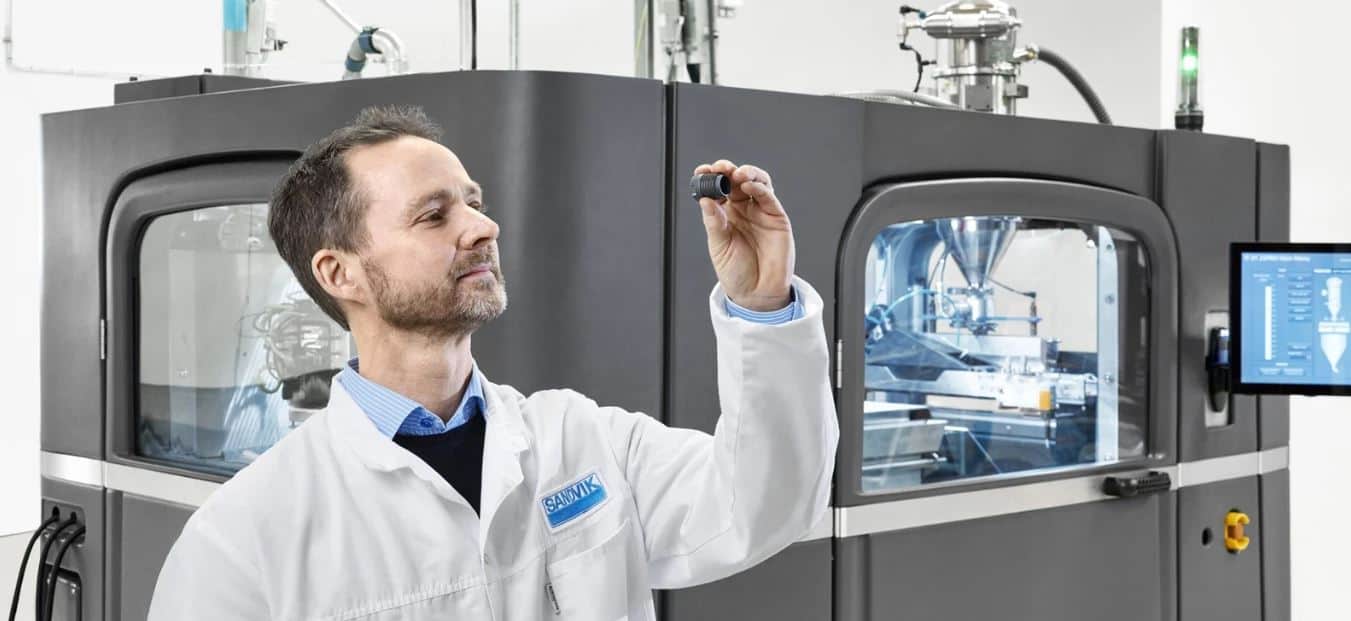Cemented Carbide Components made by Additive Manufacturing
In most industries, especially those battling harsh environments, wear resistance is crucial for productivity. Sandvik has been perfecting cemented carbide since 1932, leveraging 160 years of materials expertise to develop a patented process that allows to 3D print cemented carbide components.
Using additive manufacturing for making cemented carbide components means far greater design flexibility compared to producing components by, for example, press and sintering methods. With additive manufacturing, virtually any component geometry is possible.
Application areas
Cemented carbide is characterized by high durability and wear resistance. Therefore, components made from cemented carbide have a typically 3-20 times longer service life compared to steels and other alloys. This makes cemented carbide suitable for wear parts and metal-cutting tools.
“Cemented carbide is one of the very hardest, if not the hardest material available in 3D printed shape as of today. When implementing additive manufacturing into your business, you basically eliminate all previous design restrictions – enabling you to focus on designing components based on operational needs and requirements, without having to adapt to a specific shape or form. One example is this wire drawing nib from a recent R&D project in our workshop. The closed loop spiral coolant channels enable efficient cooling of the nib, while the wire remains dry. This would have been impossible to achieve without additive manufacturing.” says Anders Ohlsson, Lead Product Manager, Sandvik Additive Manufacturing,
Varel high-precision nozzles are used to inject fluid across fixed cutter bits. These small products are subject to harsh underground hard-rock drilling and extreme hydraulic conditions – calling for hard materials and excellent wear resistance. Cemented carbide components using Additive Manufacturing are a perfect fit.
Mikael Schuisky, VP and Head of Business Unit Additive Manufacturing, Sandvik, says:
“The main enabler behind us continuously building on our additive offering is the fact that at Sandvik, innovation never stops. Thanks to our longstanding experience in materials technology paired with our expertise along the additive value chain, made even stronger by our partnership with the BEAMIT Group, we can innovate at a speed few others can. This makes us uniquely positioned to drive the shift toward the industrialization of 3D printing, and prove sustainable manufacturing isn’t just possible – it’s already happening. 3D printing in cemented carbide is a natural next step for us having perfected these materials for decades, and we are very pleased to offer additively manufactured components that can revolutionize the performance throughout our customers’ businesses.”
Subscribe to AM Chronicle Newsletter to stay connected: https://bit.ly/3fBZ1mP
Follow us on LinkedIn: https://bit.ly/3IjhrFq
Visit for more interesting content on additive manufacturing: https://amchronicle.com/


